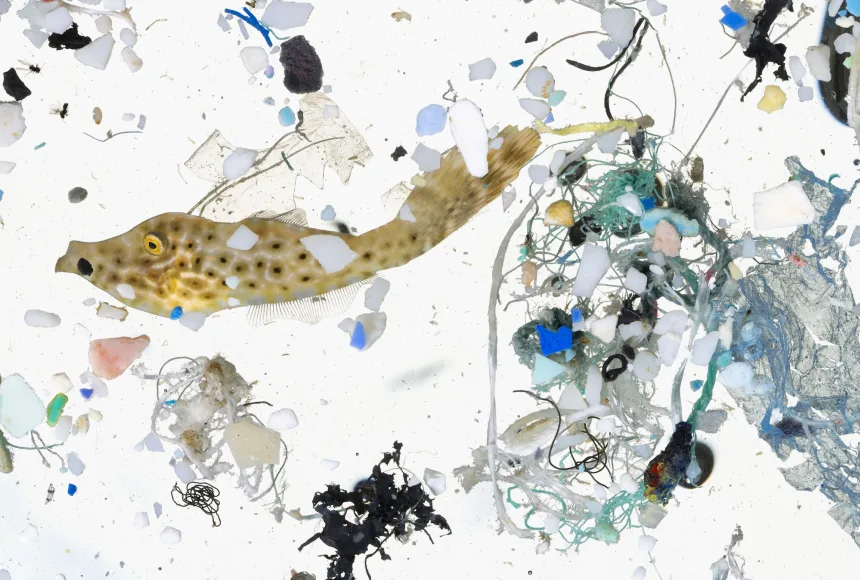Why We Should Worry About Microplastics
By Joshua O. Villalobos
HAPI-Bacolod Member & HAPI Scholar

Here is cause for concern: microplastics have been found in bodies of water, air, soil, the food we eat, and even in our bodies!
Microplastics are extremely small pieces of plastics produced when plastic disintegrates or because of industrial wastes. According to the U.S. National Oceanic and Atmospheric Administration and the European Chemicals Agency, microplastics are any type of plastic less than 5 mm in length. Let’s visualize that a little bit better: imagine the top of a push pin, which is 5 mm. Microplastics include anything smaller than that!
Microplastics cause pollution by entering different natural ecosystems from a variety of sources, including cosmetics, clothing, food packaging, and industrial processes. According to a study, there can be up to 125 trillion microplastics floating in the ocean alone, discounting those microplastcs in soil and other places.
Because of this widespread pollution of microplastics, they have now gone to places where we don’t expect them to be.
Deep Oceans
Microplastics have been discovered to have settled in the deep oceans. Though it is already common scientific knowledge that microplastics float on the ocean’s surface (like in the Great Pacific Garbage Patch), a new discovery reveals that microplastics have reached the deep ocean, as far down as 3,000 feet. That is the part of the ocean where sharks and whales swim and now we have microplastics in them!
Fish
Well, since we’ve established that there are microplastics in even the deepest parts of the ocean, it might not be a surprise that there are microplastics in fish. In a study by Ocean Conservancy, at least one microplastic was found in 74 percent of fillets and 63 percent of livers, while 99 percent of fish had at least one particle in each of the three tissues analyzed.

What does this mean for those of us who love eating fish? Quite simply, it also means that we are eating microplastics as well. According to another study, we might be eating as much plastic as there is in a credit card (about five grams of micro and nano plastics) per week!
Thus, it isn’t so shocking that these particles have been found in…
Human Feces and Blood
In 2018, National Geographic reported that microplastics have been found on human poop! As per an October 2018 article:
“The inevitable has happened. Microplastics have already been found in birds and fish and whales, so it should have come as no surprise that they have now been discovered in humans. To be specific but indelicate, tiny plastic particles and fibers have been found in the stool of eight people who provided samples as part of a pilot study.” – National Geographic, 2018
Meanwhile, in March 2022, The Guardian reported that 80% of the people tested in research showed that their blood has been polluted by microplastics.
There hasn’t been much research done on their effects on human health. Nonetheless, a study published last year by Hull York Medical School and the University of Hull indicated that excessive quantities of ingested microplastics in the human body might cause detrimental effects such as cell death and allergic reactions.
Our lack of knowledge on the effects of microplastics on human health should also be a cause for concern. Since we don’t know much in this field, the possibilities are endless (and most of them are likely to be negative). It is a serious problem that all of us should be concerned with and deserves more research.
There should be a lot of effort on this front both from the private sector and the government. Because we don’t know the exact long-term effects yet, microplastic ingestion might be the next public health issue that will haunt this generation. However, beyond that, governments need to be more proactive in responding to this problem by banning microplastics from products and/or banning plastic packaging, where possible.
–
HAPI-Green is our Special Department concerned with bringing environmental issues like microplastic pollution to light. Led by ambassador Sassa Aguirre, it is always welcome to volunteers and helping hands!









